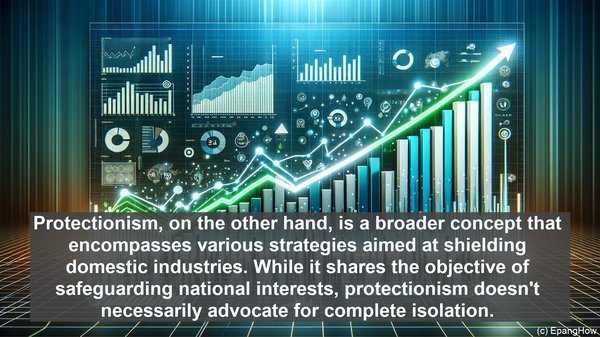Introduction: The Significance of Trade Policy
Trade policy plays a vital role in shaping a nation’s economic landscape. It encompasses a range of decisions, from tariffs and quotas to international agreements. Two approaches that often emerge in discussions on trade policy are isolationism and protectionism. While they share some commonalities, they have fundamental differences that shape their application and outcomes.
Isolationism: A Historical Perspective
Isolationism, as a trade policy, is rooted in the idea of self-sufficiency. Historically, nations like the United States have adopted isolationist stances, aiming to limit their dependence on foreign markets. This approach often involves high trade barriers, such as tariffs and import restrictions, to protect domestic industries. The underlying belief is that by reducing reliance on global markets, a nation can safeguard its economic interests and maintain control over its resources.

Protectionism: Balancing Domestic and International Interests
Protectionism, on the other hand, is a broader concept that encompasses various strategies aimed at shielding domestic industries. While it shares the objective of safeguarding national interests, protectionism doesn’t necessarily advocate for complete isolation. Instead, it seeks to strike a balance between domestic production and international trade. This can involve measures like tariffs, subsidies, and quotas, which aim to provide a competitive advantage to domestic industries while still engaging in global commerce.
The Modern Context: Trade Wars and Globalization
In recent times, the debate around trade policy has intensified, with issues like trade wars and globalization coming to the forefront. Isolationist tendencies, often driven by concerns over job losses and national security, have gained traction in some quarters. On the other hand, proponents of free trade argue that protectionist measures can lead to a cycle of retaliation, hampering global economic growth. The challenge lies in finding a balance that addresses domestic concerns without undermining the benefits of international trade.

